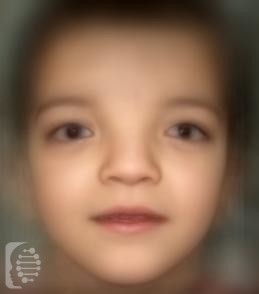What is Donnai-Barrow syndrome?
Donnai-Barrow syndrome is a rare genetic condition that affects multiple parts and systems of the body including the brain, ears, face, eyes, and internal organs. It is believed to affect less than 50 individuals globally.
Syndrome Synonyms:
DBS/FOAR Syndrome Diaphragmatic Hernia, Exomphalos, Absent Corpus Callosum, Hypertelorism, Myopia, Sensorineural Deafness, and Proteinuria; Faciooculoacousticorenal Syndrome FOAR
What gene change causes Donnai-Barrow syndrome?
Mutations to the LRP2 gene are responsible for the syndrome. It is inherited in an autosomal recessive pattern.
What are the main symptoms of Donnai-Barrow syndrome?
Facial features of the syndrome include wide-set eyes, a short and bulbous nose, a flat nasal bridge, ears rotated backward, and a widow’s peak hairline. Hearing loss due to anomalies in the inner ear, as well as vision problems, are common. Some individuals have a split in the iris (the colored part of the eye).
Often individuals with the syndrome have missing tissue connecting the left and right parts of their brain (absent corpus callosum). This causes mild to moderate intellectual disability and developmental delay.
Other potentially serious symptoms include a congenital diaphragmatic hernia, this is a hole in the muscle separating the abdomen from the diaphragm. This hernia can lead the stomach to move into the chest and intestines, crowding the developing heart and lungs
Possible clinical traits/features:
Congenital diaphragmatic hernia, Retinal detachment, Chorioretinal coloboma, Downslanted palpebral fissures, Diaphragmatic eventration, Malar flattening, Retinal dystrophy, Broad nasal tip, Cataract, Abnormality of the fontanelles or cranial sutures, Aplasia/Hypoplasia of the corpus callosum, Ventricular septal defect, Umbilical hernia, Proptosis, Midface retrusion, Infra-orbital crease, Macrocephaly, High myopia, Myopia, Short nose, Iris coloboma, Abnormal morphology of female internal genitalia, Low-set, posteriorly rotated ears, Low-molecular-weight proteinuria, Low-set ears, Intestinal malrotation, Hypertelorism, Cognitive impairment, Global developmental delay, Bicornuate uterus, Hypoplasia of the iris, Broad forehead, High anterior hairline, Depressed nasal bridge, Visual impairment, Seizure, Non-acidotic proximal tubulopathy, Sensorineural hearing impairment, Omphalocele, Posteriorly rotated ears, Autosomal recessive inheritance, Proteinuria, Progressive visual loss, Wide anterior fontanel, Partial or complete agenesis of corpus callosum.
How is it diagnosed?
To find out if someone has a diagnosis of Donnai-Barrow syndrome, it is important to have a consultation and evaluation with a clinical genetic specialist. Specialists may also suggest specific genetic testing or other types of tests to help reach a diagnosis. FDNA’s AI technology can help speed up the diagnostic process by analyzing facial features and other health information.

